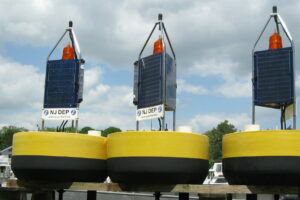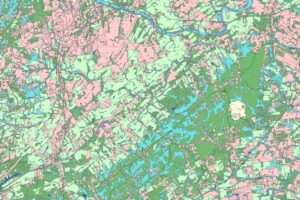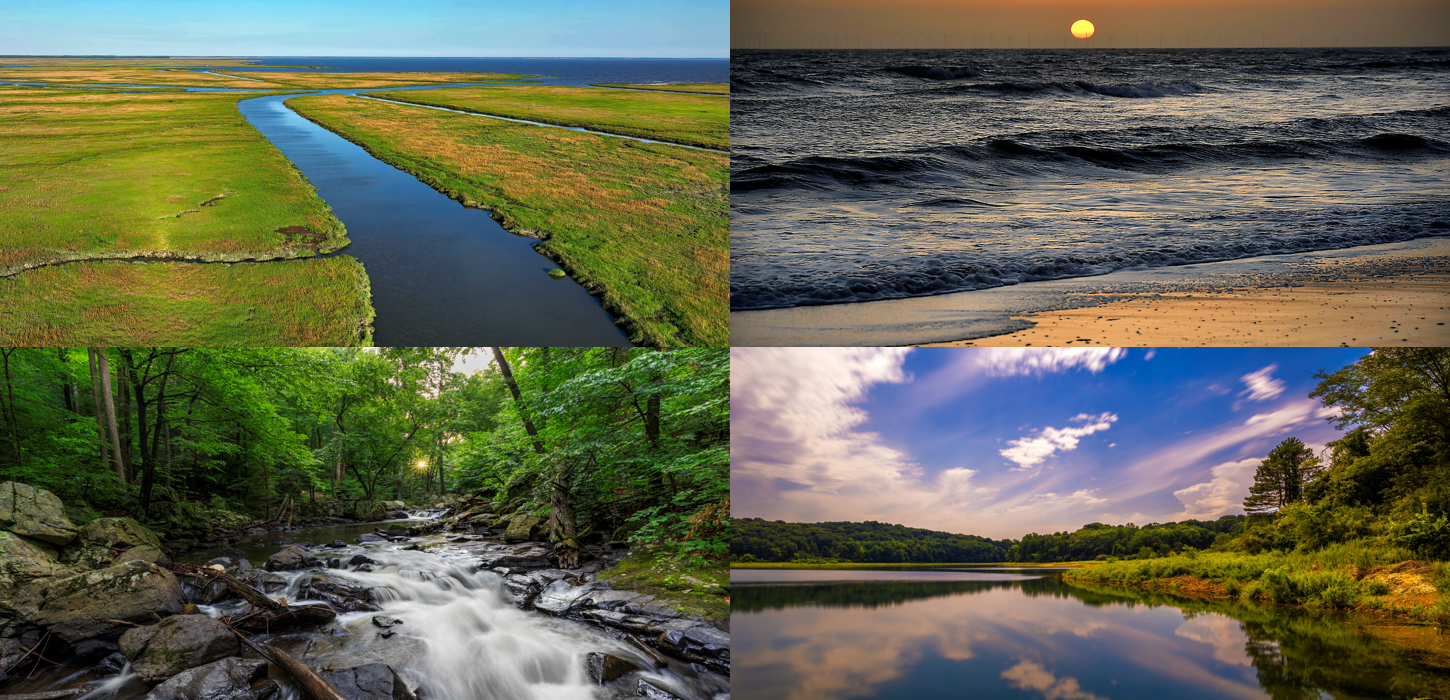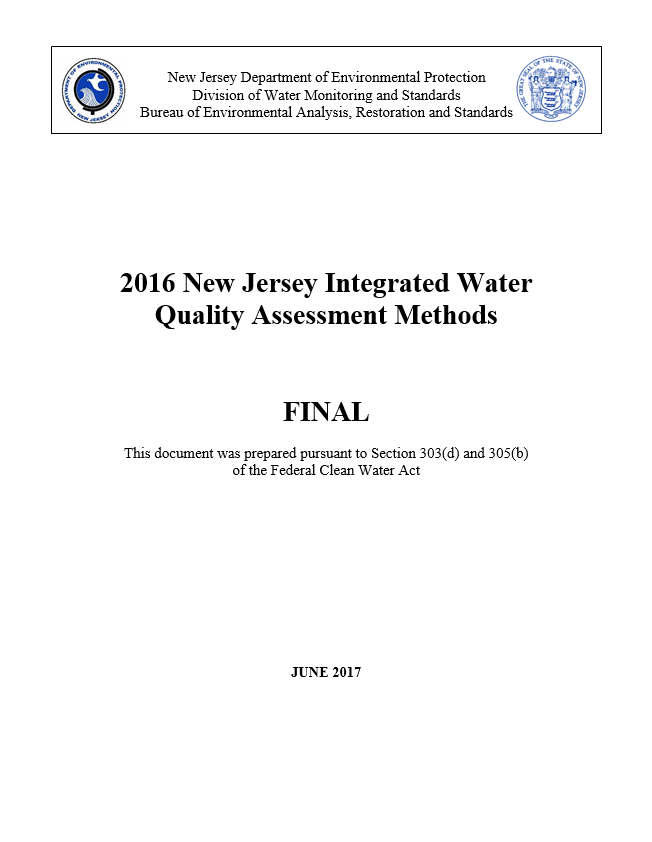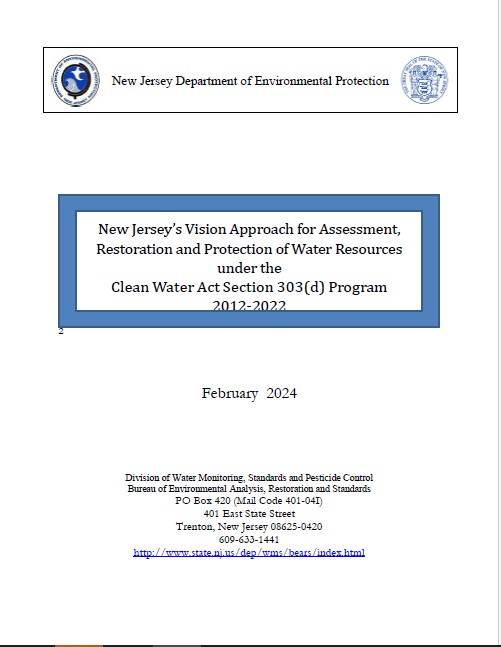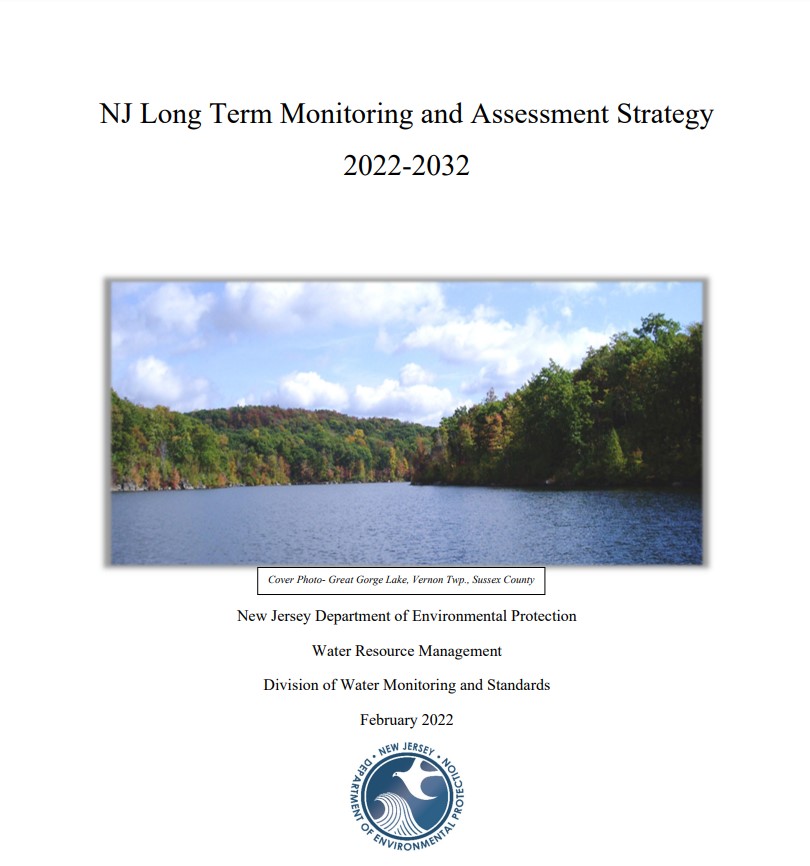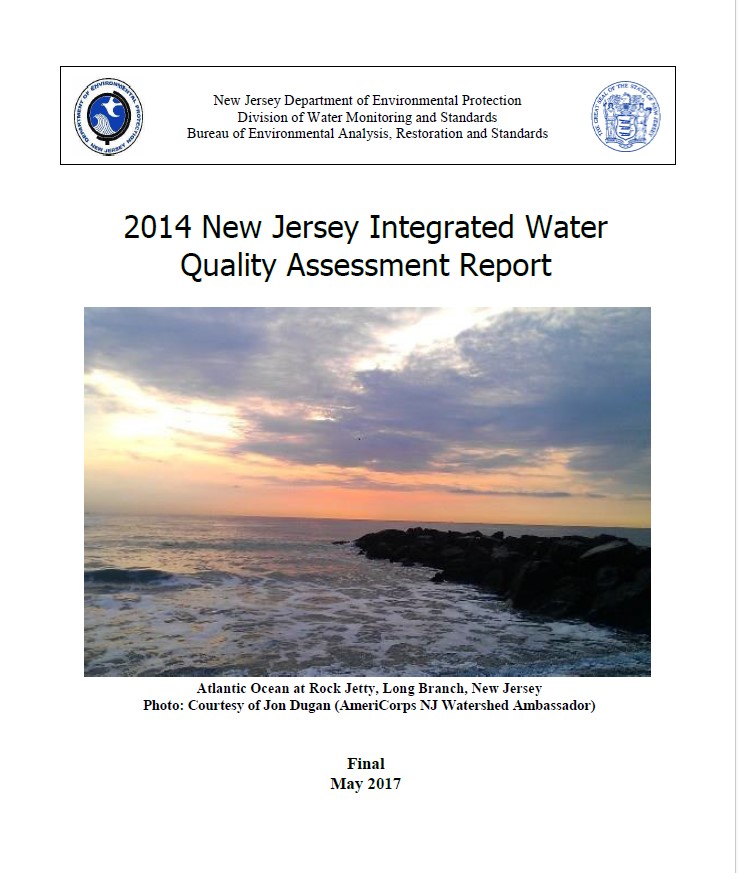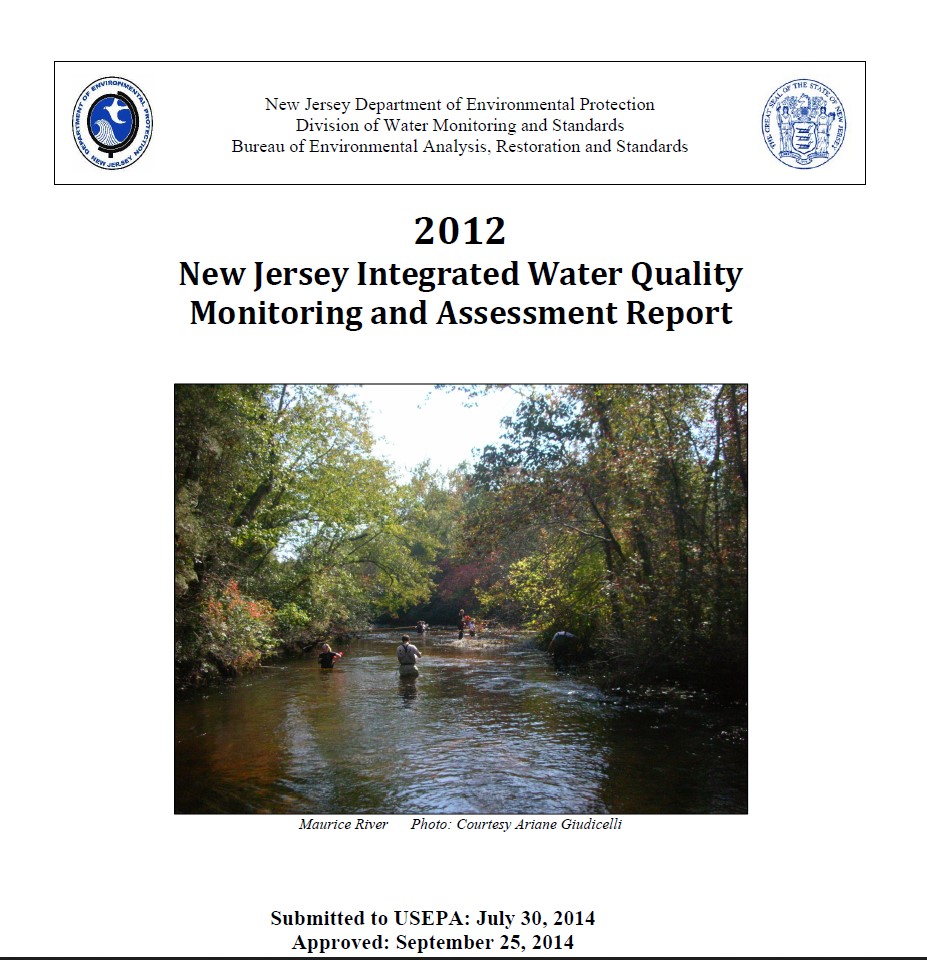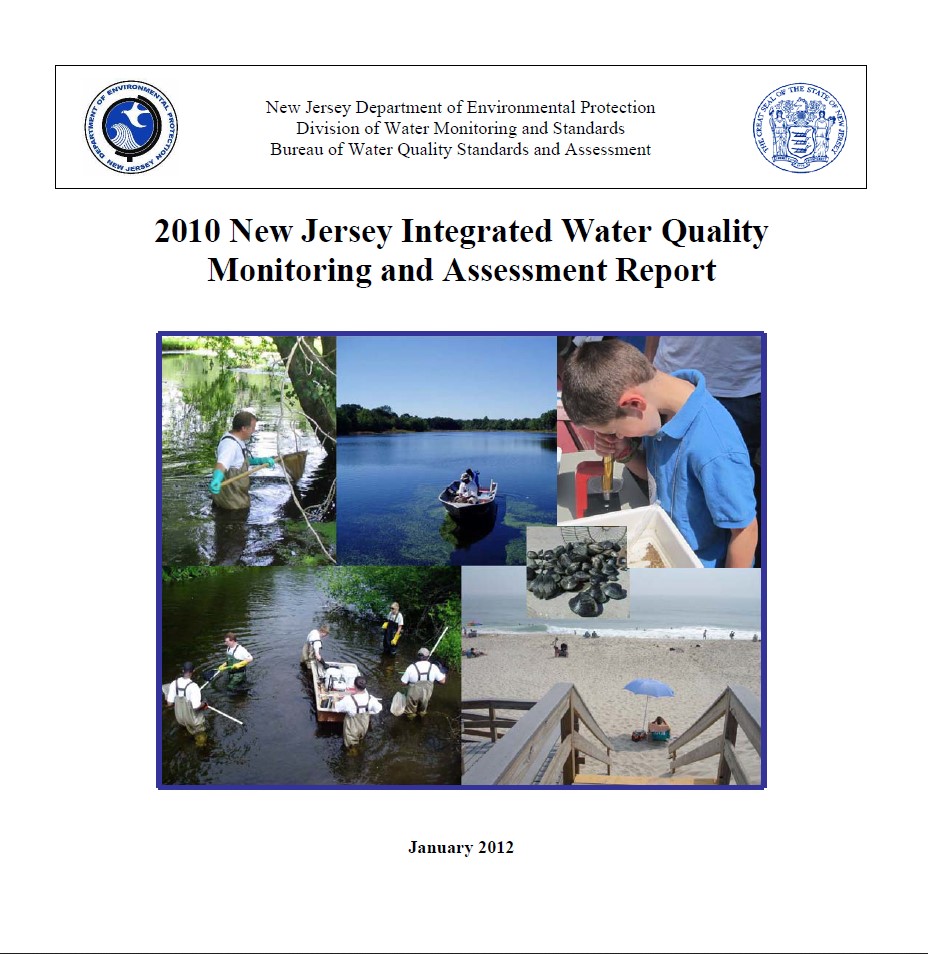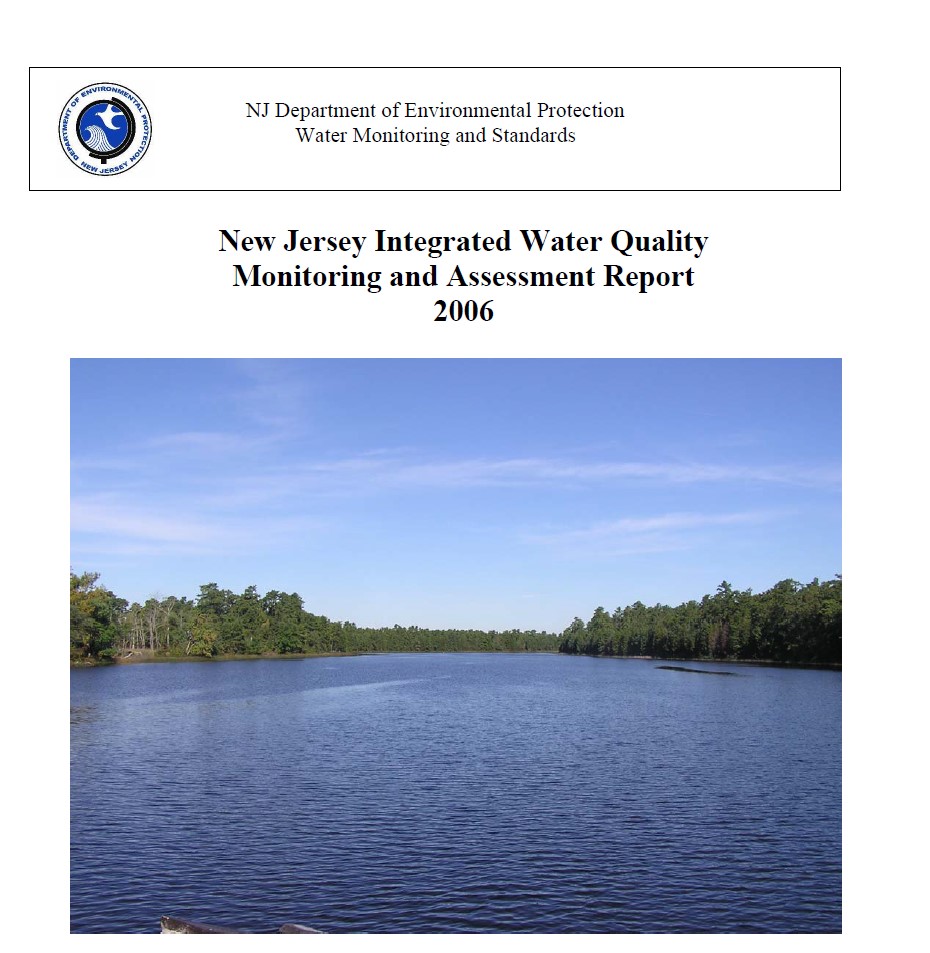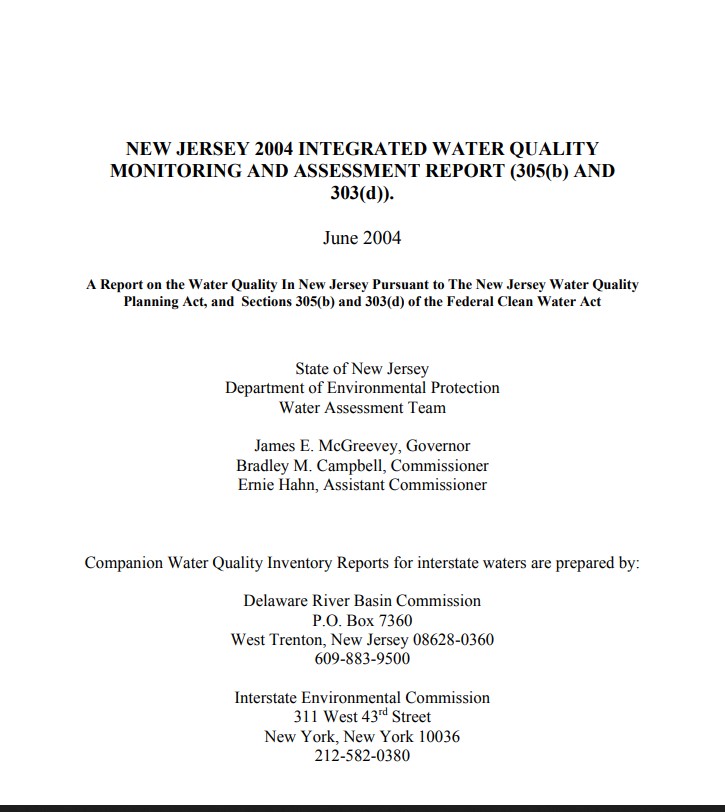
Integrated Water Quality Report
General information on the water quality assessment program and the Integrated Report. (Homepage)
Access databases where publicly-available water quality data is stored. Description of DEP and non-DEP monitoring programs statewide.
DEP advisories on current and historical water quality conditions. Relevant water quality reports and special studies.
Description and access DEP programs focused on protecting, preserving, and restoring water quality throughout the state.
DEP Geographic Information System (GIS) tools and data showcasing water quality information.
 The New Jersey Integrated Water Quality Assessment Report (Integrated Report) is a compilation of information about the quality of New Jersey’s surface waters. The New Jersey Department of Environmental Protection (DEP) prepares the Integrated Report as a biennial assessment of statewide water quality that identifies and prioritizes waters for protection, restoration, and additional monitoring or research. The Integrated Report thus serves as an effective tool for enhancing, maintaining, and restoring water quality in all surface waters of the State to support their use for aquatic life, recreation, water supply, fish consumption, and shellfish harvest for consumption.
The New Jersey Integrated Water Quality Assessment Report (Integrated Report) is a compilation of information about the quality of New Jersey’s surface waters. The New Jersey Department of Environmental Protection (DEP) prepares the Integrated Report as a biennial assessment of statewide water quality that identifies and prioritizes waters for protection, restoration, and additional monitoring or research. The Integrated Report thus serves as an effective tool for enhancing, maintaining, and restoring water quality in all surface waters of the State to support their use for aquatic life, recreation, water supply, fish consumption, and shellfish harvest for consumption.
New Jersey’s surface waters provide much of the water used for drinking water supplies, recreation, fishing, boating, swimming, commercial fisheries including shellfish, and tourism, all of which support our State’s ecology, economy, and quality of life for our residents. New Jersey conducts a statewide assessment of water quality every two years. This includes an intensive assessment of one of New Jersey’s five water regions each assessment cycle. A different water region is selected each assessment cycle on a rotating basis.
Tutorial for the new web-based Integrated Report
Tutorial for the Interactive Designated Use Results Map within the Integrated Report
Related Documents and Information
Prior to developing the 303(d) and Integrated Lists, states are required to publish the methods used to collect, analyze, and interpret data to determine compliance with applicable water quality standards and assess support of applicable designated uses. This Methods Document serves that function by providing an objective and scientifically sound assessment methodology, including:
- A description of the data DEP will use to assess support of the designated uses;
- The quality assurance aspects of the data and rationale for any decision to not use any existing and readily available data and information;
- A description of the methods used to evaluate compliance with the SWQS and determine placement on the 303(d) List;
- A description of the methods used to evaluate designated use support and determine placement on the Integrated List;
- Changes in assessment methodology since the last reporting cycle.
In 2013, USEPA issued guidance on a new vision and national goals for meeting the goals of the CWA Section 303(d). The Vision Document provides alternative strategies to restore impaired waters under USEPA’s emphasis on TMDLs as the sole means to attain designated uses and water quality standards. USEPA’s vision provides additional flexibility under the 303(d) Program for states to identify and prioritize waterbodies for restoration and protection through whatever means are appropriate under existing programs regulatory frameworks, and achieve water quality objectives in accordance with the state’s priorities.
Beginning with the 2014 Integrated Report, the DEP published the “New Jersey’s Vision Approach for Assessment, Restoration and Protection of Water Resources under the Clean Water Act Section 303(d) Program” explaining New Jersey’s strategy for managing the CWA Section 303(d) Program in accordance with guidance issued by USEPA. The new vision includes 6 goals: Engagement, Integration, Protection, Prioritization, Alternatives, and Assessment.
New Jersey’s Vision Approach is designed to accomplish both federal and State water quality goals through statewide ambient water quality monitoring, water quality standards that protect and support designated uses of New Jersey’s waters; assessment of water quality to determine support of designated uses; development, implementation and funding of strategies to protect and restore water resources; and communication and partnership with the public.
DEP’s strategic goal outlined in the “New Jersey Long Term Monitoring and Assessment Strategy (2022-2032)” to develop a comprehensive monitoring program for all waters of the state has resulted in a drastic increase in the number of monitoring stations and samples collected over the last decade. In collaboration with other water monitoring stakeholders and agencies, the number of AUs with data has risen significantly and has resulted in a comprehensive understanding of water quality conditions.
The monitoring program strategy covers all waters of the state (streams, rivers, lakes, reservoirs, estuaries, coastal areas, wetlands and ground water). For each waterbody type, the strategy includes discussions of 9 basic elements: 1. Monitoring objectives, 2. Monitoring design, 3. Core & supplemental water quality indicators, 4. Quality assurance, 5. Data management, 6. Data analysis/assessment, 7. Reporting, 8. Programmatic evaluation, and 9. General support and infrastructure planning.
Public participation is an integral part of the Integrated Report. Opportunities for data submissions and comments on the Integrated Report are provided to ensure this science-based document is informed, comprehensive and transparent.
The DEP provides several avenues for announcing its intent to seek water quality data and public comments to the Integrated Report from the general public:
- publication of a notice in the New Jersey Register,
- posting on the DEP’s Water Quality Assessment Website,
- electronic announcement sent to subscribers of the DEP’s Email List
DEP provides opportunities for public review and comment submission for the Methods Document and Integrated Report before they are published. The “Comment Period” for all documents are for a minimum of 30 days after announcement in the New Jersey Register. The documents are available on the DEP’s Water Quality Assessment Website for review. After the public comment period closes, the documents are revised as needed to address comments and is submitted to USEPA for formal approval. All responses to the comments are submitted with the final document.
Comments may be submitted by:
- electronically through email, (highly encouraged)
- regular mail,
- over the phone,
- in person.
If you have any questions, comments or requests for information, please contact us.
Email: NJIntegratedReport@dep.nj.gov
Phone: 609-633-1441
Address: Bureau of Environmental Analysis, Restoration and Standards
Division of Water Monitoring, Standards and Pesticide Control
401 E. State Street
PO Box 401
Trenton, NJ 08625
Previous Assessment Reports
| Final 2018/2020 Integrated Report | Final 2018/2020 Integrated Water Quality Assessment Webpage Report including all appendices, data tables, and interactive water quality maps. |  |
|
 |
|
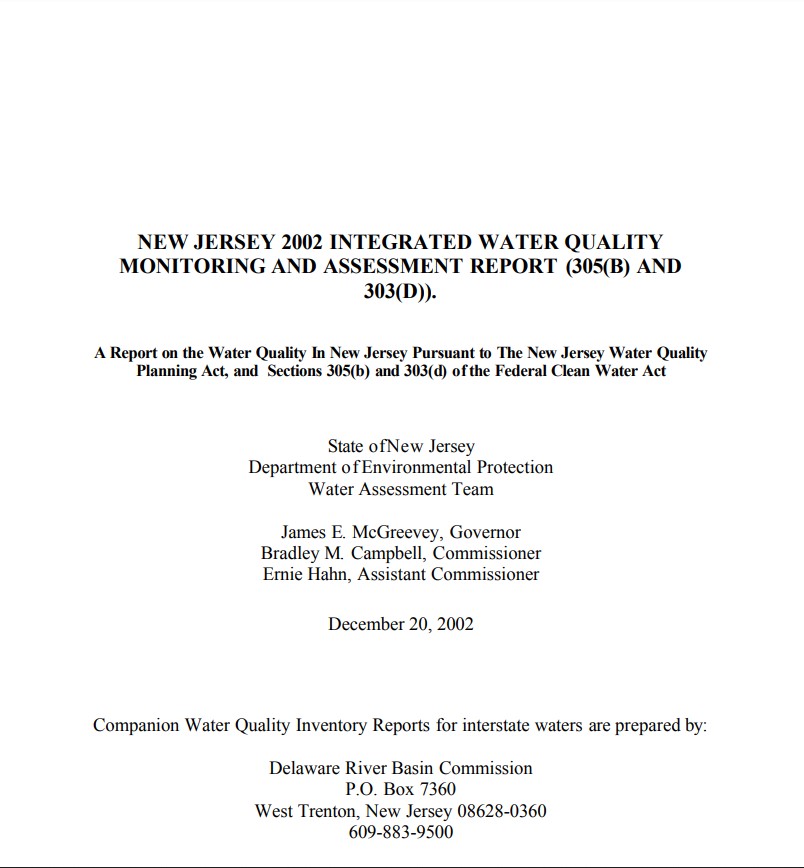 |
The following historic reports are available from New Jersey's electronic digital library using the links provided:
- 2000 NJ Water Quality Inventory Report: http://hdl.rutgers.edu/1782.1/rucore00000002074.Document.000065319
- 1998 Identification and Setting of Priorities for Section 303(d) Water Quality Limited Waters in New Jersey: http://hdl.rutgers.edu/1782.1/rucore00000002074.Document.000055529
- 1996 NJ Water Quality Inventory Report: http://hdl.rutgers.edu/1782.1/rucore00000002110.Document.000061900
- 1994 NJ Water Quality Inventory Report: http://hdl.rutgers.edu/1782.1/rucore00000002074.Document.000055061
- 1992 NJ Water Quality Inventory Report: http://hdl.rutgers.edu/1782.1/rucore00000002110.Document.000061755
- 1990 NJ Water Quality Inventory Report: http://hdl.rutgers.edu/1782.1/rucore00000002110.Document.000059398
- 1988 NJ Water Quality Inventory Report: http://hdl.rutgers.edu/1782.1/rucore00000002110.Document.000061754
- 1986 NJ Water Quality Inventory Report: http://hdl.rutgers.edu/1782.1/rucore00000002110.Document.000061753
- 1984 NJ Water Quality Inventory Report: http://hdl.rutgers.edu/1782.1/rucore00000002110.Document.000061899
- 1982 NJ Water Quality Inventory Report: http://hdl.rutgers.edu/1782.1/rucore00000002110.Document.000059402
- 1980 NJ Water Quality Inventory Report: http://hdl.rutgers.edu/1782.1/rucore00000002110.Document.000061896
- 1976 NJ Water Quality Inventory Report: http://hdl.rutgers.edu/1782.1/rucore00000002110.Document.000061895
- 1975 NJ Water Quality Inventory, Annual Assessment: http://hdl.rutgers.edu/1782.1/rucore00000002110.Document.000061893
- 1975 NJ Water Quality Inventory Report (305)b Report: http://hdl.rutgers.edu/1782.1/rucore00000002110.Document.000061894

